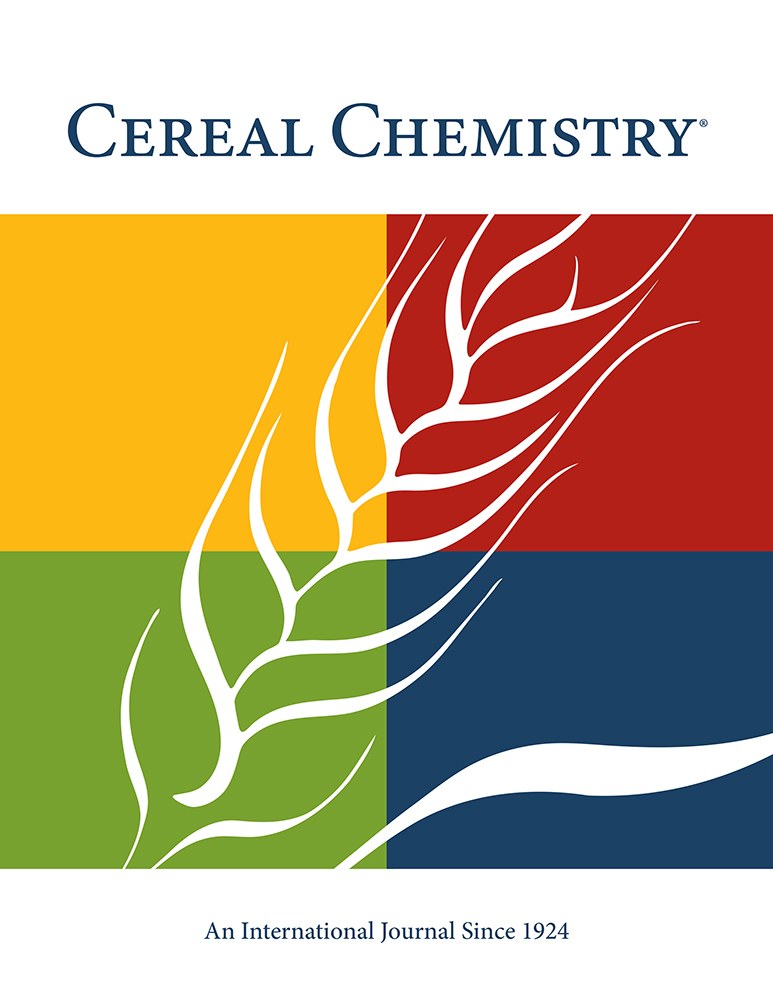Variation in β-Glucan Fine Structure, Extractability, and Flour Slurry Viscosity in Oats Due to Genotype and Environment
ABSTRACT
Effects of genotype and environment on (1→3), (1→4)-β-d-glucan (β-glucan) extractability, flour slurry viscosity, and β-glucan polymer fine structure in oats were tested. One environment had a severe negative effect on slurry viscosity as evaluated with a rotational viscometer. Environment also had a strong effect on β-glucan extractability, whereas genotype had no significant effect. Fine structure of β-glucan was evaluated from the frequencies of oligosaccharides from lichenase hydrolysis of the β-glucan polymer. Significant differences in degree of polymerization (DP) fragment frequencies were found associated with both genotype and growth environment. The high-β-glucan cultivar HiFi had lower DP3 fragment frequency and higher frequencies of DP4 and DP6 fragments than other cultivars with moderate β-glucan concentration. Drier environments tended to yield lower DP3 fragment frequencies as well. Drier environments and genotypes with more β-glucan synthetic potential may have provided cellular environments with more competition for substrate for β-glucan synthesis, which appeared associated with lower DP3 fragment frequency. In a separate experiment, we found that extractable β-glucan had higher frequencies of DP3 fragments and lower frequency of DP4 fragments. The observed variations deserve consideration for influence on functional properties, such as viscosity or health benefit potential.




